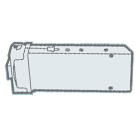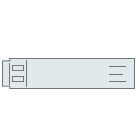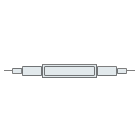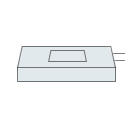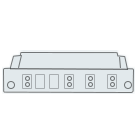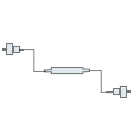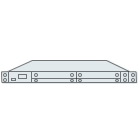Fiber Optic Tech
Fiber Bypass Module: Empowering Efficient Networks, Ensuring Seamless Connectivity
In today’s rapidly evolving digital era, network stability and security are critical pillars of business operations. Fiber Bypass Modules, as essential components in optical communication networks, are becoming the go-to solution for data centers, telecommunications, and enterprise networks due to their superior performance and versatile applications. As optical network technologies continue to evolve, data centers, carrier networks, and enterprise networks are placing increasingly stringent demands on link reliability and high-bandwidth performance. As a critical optical protection device, the fiber bypass module has been widely deployed in various scenarios such as ring network operations, cloud computing, and financial networks. This paper presents a detailed analysis of fiber bypass modules across different data rates (including 1.25G, 10G, 40G, and 100G), examining their technical mechanisms, engineering characteristics, and application scenarios, thereby providing empirical support for future research and engineering implementations. Our 1.25G, 10G, 40G, and 100G Fiber Bypass Modules, with cutting-edge technology and reliable design, offer customers efficient, stable, and secure network solutions. Below, we explore their key features and broad market applications.
Network Environment and Technical Requirements
Modern optical networks are undergoing a phase of rapid transformation driven by advances in communication technology. Optical fiber-based data links serve as the core infrastructure for achieving high-speed, high-bandwidth, and low-latency networking. However, with the growing complexity of network architectures, the failure of a single node device can lead to a complete link disruption. As such, the ability to seamlessly replace devices and dynamically respond to link failures has become a vital solution for safeguarding data communication systems. Fiber bypass modules have emerged under this context as highly adaptive optical protection devices, increasingly applied in real-world network environments.
Basic Operating Principles and Engineering Structure of Fiber Bypass Modules
A typical fiber bypass module consists of three main components: an optical switching unit, a status detection and management unit, and an integrated fiber connection interface. When the inline application device operates normally, the optical signal passes through it for processing and forwarding. In the event of device failure or power outage, the internal monitoring system of the module triggers the optical switching unit, redirecting the signal directly to the downstream device, thereby enabling failover protection. Compared with traditional electronic switching mechanisms, fiber bypass modules offer advantages such as lower latency, higher bandwidth, compact size, and independence from the power status of the inline device, making them well-suited for diverse optical networking applications.
Technical Characteristics of Fiber Bypass Modules by Data Rate
1.25G Fiber Bypass Modules: Primarily used for legacy Gigabit Ethernet systems, these modules are characterized by simple structure, low power consumption, and minimal cost, making them ideal for edge access layers and small enterprise networks.
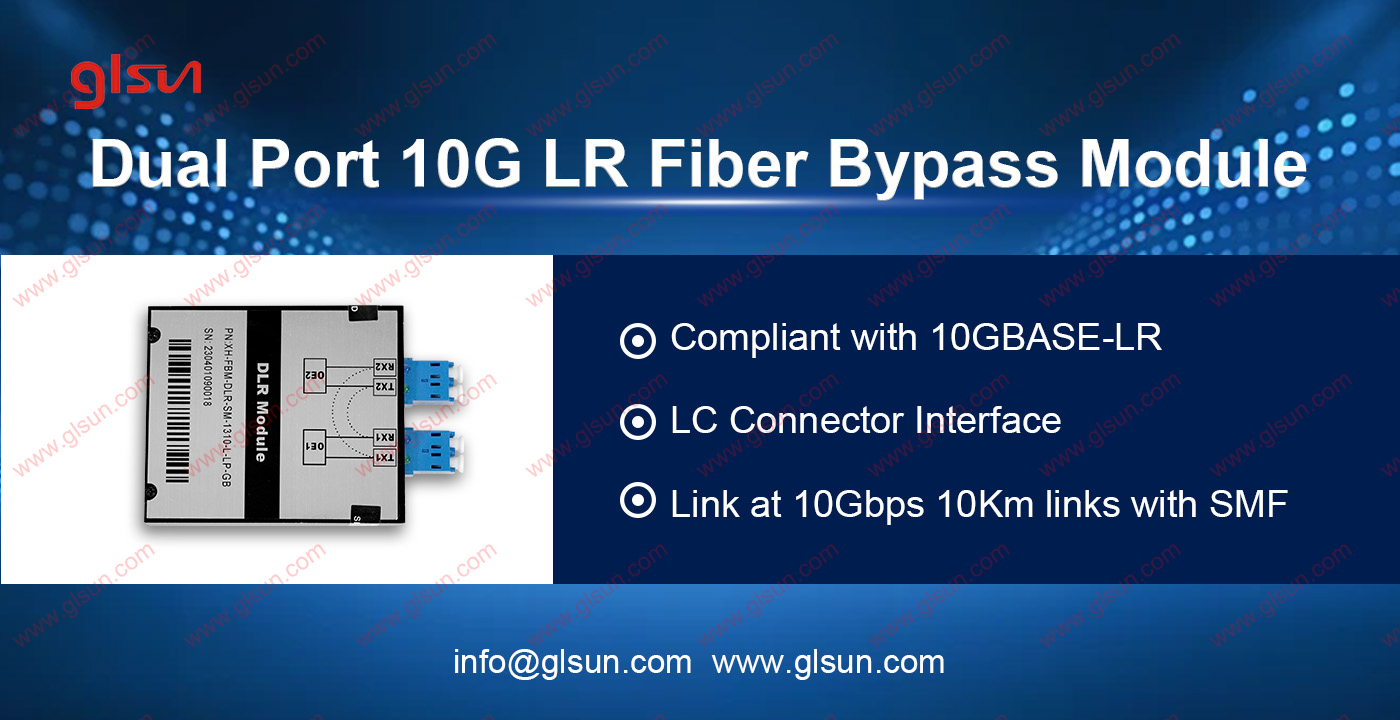
10G Fiber Bypass Modules: Widely deployed in core exchanges of carrier and data center networks, 10G modules offer enhanced data rate matching and bit error rate control, and support mainstream form factors such as XFP and SFP+.
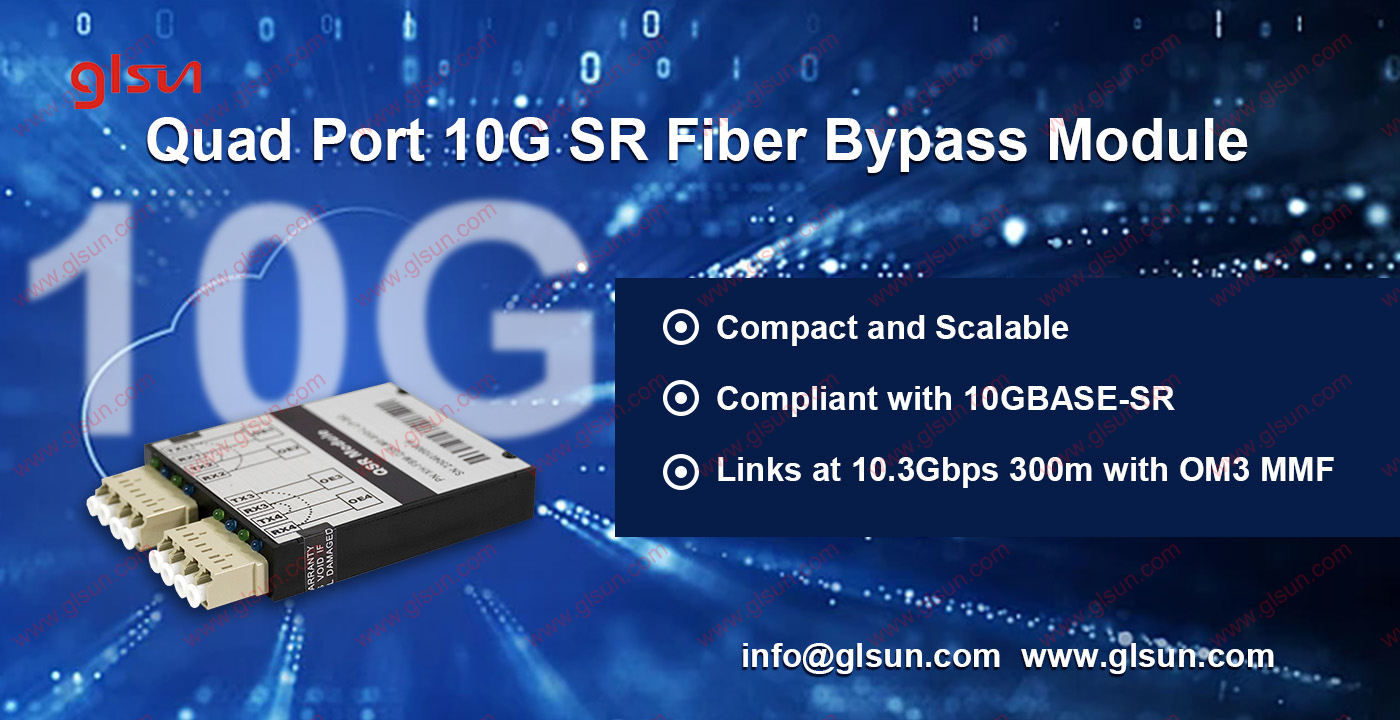
40G Fiber Bypass Modules: Essential for high-capacity relays and backbone networks, these modules typically use the QSFP+ form factor and feature four-channel parallel switching along with high-speed signal equalization techniques.
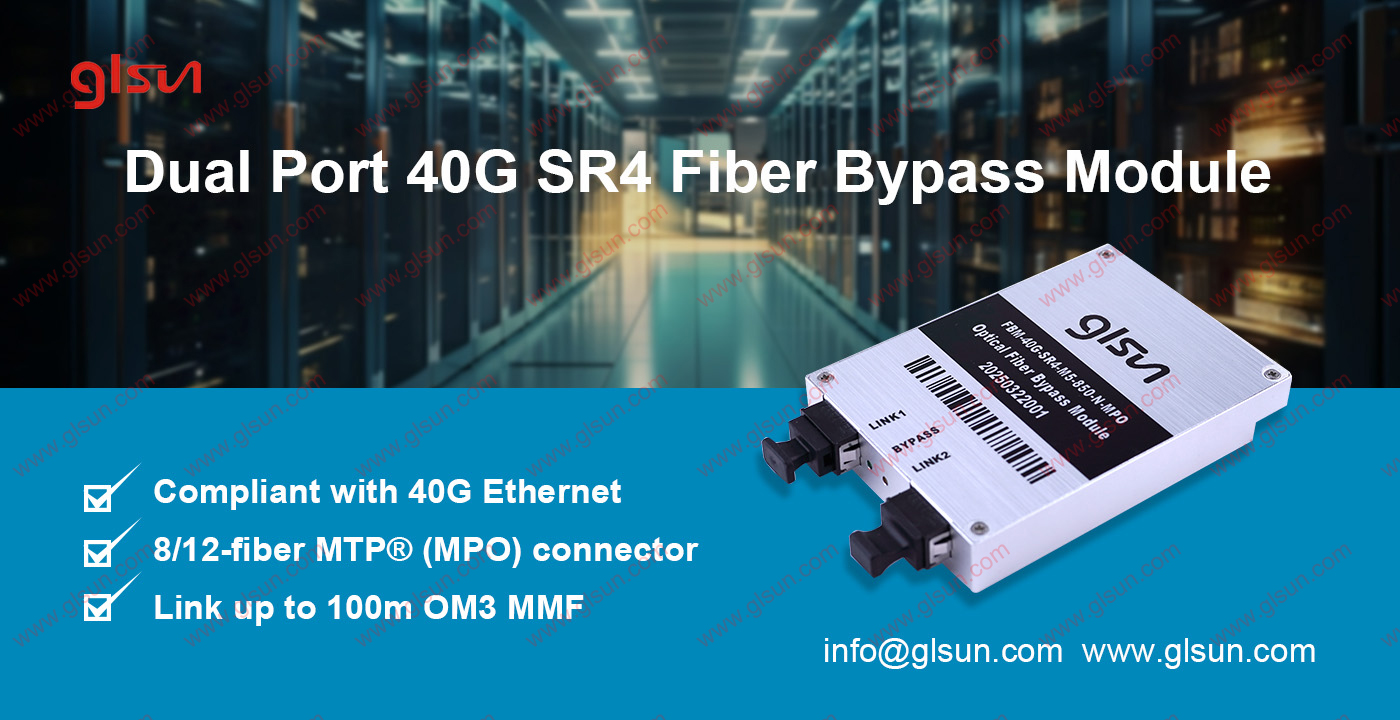
100G Fiber Bypass Modules: Designed for ultra-high-bandwidth interconnections in large-scale data centers, 100G modules support PAM4 and NRZ modulation schemes. Their internal switching systems are capable of nanosecond-level response and offer superior signal integrity, addressing the most stringent performance demands.
Key Features of Fiber Bypass Modules
1. Multi-Rate Support for Diverse Needs
Our Fiber Bypass Modules support multiple transmission rates—1.25G, 10G, 40G, and 100G—seamlessly adapting to scenarios ranging from traditional gigabit networks to next-generation ultra-high-speed 100G networks. Whether for low-rate access layer networks or high-bandwidth data center backbones, these modules provide flexible compatibility, enabling smooth network upgrades.
2. High Reliability for Uninterrupted Connectivity
Equipped with advanced fault-switching technology, our Fiber Bypass Modules can redirect traffic to a backup path within milliseconds in the event of network equipment failure (e.g., firewalls or intrusion detection systems) or power loss. This ensures uninterrupted data transmission, making them ideal for mission-critical applications like financial trading systems and telecom infrastructure.
3. Low Power Consumption and Compact Design
Our modules feature low-power designs, meeting the stringent energy efficiency requirements of data centers. Their compact form factors (e.g., SFP, SFP+, QSFP+, QSFP28) save rack space and increase port density, addressing high-density cabling needs. Compared to traditional optical modules, our 100G bypass modules offer superior power efficiency and cost savings, reducing operational expenses.
4. Flexible Interfaces and Fiber Compatibility
Supporting various interface types (e.g., LC, SC, MPO) and fiber types (single-mode OS2, multi-mode OM3/OM4), our modules adapt to diverse network architectures. The 1.25G modules support transmission up to 160km, 10G and 25G modules up to 40km, and 40G and 100G modules up to 10-40km, catering to both short-range data center interconnects and long-haul telecom needs.
5. Digital Diagnostic Monitoring (DDM)
Equipped with DDM functionality, our modules enable real-time monitoring of key parameters such as optical power, temperature, and voltage. This allows network administrators to detect potential issues early and perform proactive maintenance, enhancing network stability and management efficiency.
6. Industry-Standard Compliance for Easy Integration
Our Fiber Bypass Modules adhere to IEEE 802.3 and MSA (Multi-Source Agreement) standards, ensuring compatibility with mainstream switches, routers, and servers. Whether with Cisco, Huawei, or other brands, the modules offer plug-and-play simplicity, streamlining deployment processes.
Main Applications of Fiber Bypass Modules
With their unique functionality and flexibility, Fiber Bypass Modules are widely adopted across various industries and scenarios. Below are their primary market applications:
1. Data Centers
As cloud computing, big data, and AI drive demand for high bandwidth, low latency, and high reliability, our 40G and 100G Fiber Bypass Modules, supporting QSFP+ and QSFP28 packages, enable high-speed interconnects between servers, switches, and storage systems. They ensure seamless traffic switching during equipment failures. The 100G QSFP28 module, in particular, supports up to 100m (OM4 multi-mode fiber) or 10km (single-mode fiber), meeting both short- and medium-range interconnect needs in hyperscale data centers.
2. 5G Telecom Networks
The rollout of 5G networks demands higher data rates and reliability. Our 25G and 100G Fiber Bypass Modules are widely used in 5G fronthaul, midhaul, and backhaul networks. For instance, 25G SFP28 modules support 300m to 10km transmission in 5G fronthaul, while 100G modules cater to metro and backbone networks transitioning to 100G or 400G. Their fast fault-switching ensures high availability, supporting applications like smart cities, autonomous driving, and mobile healthcare.
3. Enterprise Networks and Security
In enterprise networks and security applications, Fiber Bypass Modules provide reliable protection for firewalls and intrusion detection/prevention systems (IDS/IPS). In case of equipment failure, they swiftly redirect traffic to backup paths, preventing network downtime and ensuring business continuity. The cost-effective 1.25G and 10G modules are widely used in small-to-medium enterprise networks and security systems for video transmission.
4. Financial and High-Frequency Trading
The financial sector demands ultra-low latency and high reliability. Our 100G Fiber Bypass Modules, with low-power QSFP28 packaging and rapid switching, ensure stable and real-time data transmission in high-frequency trading environments, helping financial institutions maintain a competitive edge.
5. Industrial and Harsh Environment Applications
For demanding industrial settings, we offer industrial-grade Fiber Bypass Modules (operating temperature range: -40°C to +85°C), suitable for 5G base stations, rail transit, and intelligent transportation systems. The 10G and 25G modules perform reliably in extreme conditions, ensuring stable performance.
Why Choose GLSUN‘s Fiber Bypass Modules?
Cost-Effective: Optimized design and manufacturing deliver high performance at competitive prices, reducing total cost of ownership (TCO).
Technologically Advanced: Leveraging CWDM, DWDM, and PAM4 technologies, our modules support multiple rates and long-distance transmission, meeting future network demands.
Global Support: We provide comprehensive technical support and after-sales service, ensuring worry-free deployment and maintenance worldwide.
Eco-Friendly: All products comply with RoHS standards, contributing to sustainable development and green data center initiatives.
In an era of exponential data growth, Fiber Bypass Modules are indispensable for building efficient networks with their high reliability, low power consumption, and versatile applications. Our 1.25G, 10G, 40G, and 100G Fiber Bypass Modules, with their superior performance and wide applicability, are empowering data centers, telecom networks, enterprise systems, and security applications.
Contact us today to learn more about our Fiber Bypass Module solutions and partner with us to build stable, efficient, and future-ready network infrastructure! For more details, visit our website or reach out to our sales team (mall@glsun.com).

